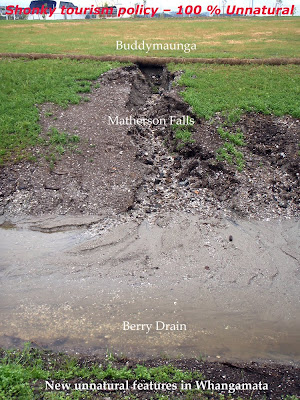

Thames Coromandel District Council invited submissions on district wide parking charges for cars with boat trailers parking adjacent to council boat ramps.
The initial WCA submission was posted. At the hearings on 4th November 2009 I was told by the chairperson to take the initial submission as read by Council. I then tabled and read the further submission to the bylaw.
Submission to TCDC 12 October 2009. This submission looks at charging of carparks by the Thames Coromandel District Council (Council). More specifically trailer boat parking near boat ramps in the Council’s district area. Though the scope of the by-law is district wide, each local area has its own set of issues and character. This submission looks at the Whangamata boat trailer parking .
Two important base line perspectives that the decision makers within Council need to have awareness of :-
· There is skilane adjacent to some of the trailer boat parks.
· There is an understanding by the community of Whangamata that boat trailer charges are to be used for the purposes of upkeep of the boat trailer parks and the hard sand boat ramp in Whangamata.
· Costs for dredging at Whangamata are partially recovered through boat trailer parking fees.
· The Council recommended and contributed millions of ratepayer dollars pursuing a marina, the excavated channel of which shares the existing boat ramp area.
· Though the marina is totally on Council and Crown land it is totally a private development. It is not core infrastructure.
Recreation Reserve – Boat Trailer Carpark, Lot 9 DPS 30953. An area in the south west corner seems to recently have been elevated due to placement of marina dredgings and now cannot be used for trailer boat parking. Can Council write to WCA before the presentation date if this is the case? This land had a Gazette Notice placed on it and a CFR issued on the 13 May 2008. Can Council send those documents to WCA previous to the presentation date?
Pt Sec 13 BLK XVI Tairua SD Council owned land extending off the western end of Beach Road. Council brought this land for a community reserve and trailer boat parking. In the 1970’s a problem surrounding lack of trailer boat parking and a future need for more community reserve space was identified by the Whangamata Community Board. Somehow the purpose of purchase morphed into providing land for a private marina development. The marina development, possibly speculative in nature, has impacted negatively on the amount of trailer boat parking. This has eroded the value of community assets, these being the boat ramp and its ancillary parking; organised around a scale required for trailer boat parking.
Council legal and planning consultants and Council planning staff involved in the marina consents did not advise the Council these losses would result from the development.
The submitter requests -
· The information asked for earlier in this submission.
· That the yearly charge for trailer boat parking of around $65 pre year is retained and spent on retention and upkeep of exiting trailer boat carparks, the sand based boat ramp and the skilane reserves at Whangamata.
· That the Council stops paying a contribution towards boat ramp channel maintenance to the marina company. The marina company has had seed money contributed by the Council and it is impacting negatively on trailer boat parking and has lessened the degree of road safety. The lessening of the degree of road safety has been caused by boat ramp users now having to use meridian strips, on the beach, on inter-tidal flats, road side parking deep into the surrounding residential area of the boat ramp. This is an effect of the marina development yet to be explained to the community.
Further Submissions to Parking Amendment 4 November 2009 to the Thames Coromandel District Council from the Whangamata Camping Association. The problem of overflow parking was avoided at Labour Weekend because Council land, part of the Extra High Density Housing Area, was opened up for overflow trailer boat parking for those using the Whangamata boat ramp. The use it was brought for by the Council.
The solution to the overflow parking requirements for the Whangamata boatramp is to change the zoning from Extra High Density Housing to a zoning allowing parking. This will be at a cost to the Council and the write down on the land value will be significant.
Unfortunately for the ratepayer the Legal and Planning team for the Council during the marina consents never told the ratepayer or the Court of this possible loss of value. As they never told the ratepayer and Court that the largest population and habitat of indigenous coastal reptiles lived on this Council owned land. The loss of this bio diversity is more significant that the housing write down
The submitter requests -
· That the yearly charge for trailer boat parking of around $65 pre year is retained and spent on retention and upkeep of exiting trailer boat carparks, the sand based boat ramp and the skilane reserves at Whangamata.
· The trailer boat parking fee in Whangamata is not used by the Council to hide a “marina tax” to sponsor private investments and speculation.
Thankyou.
Whangamata Camping Association.































